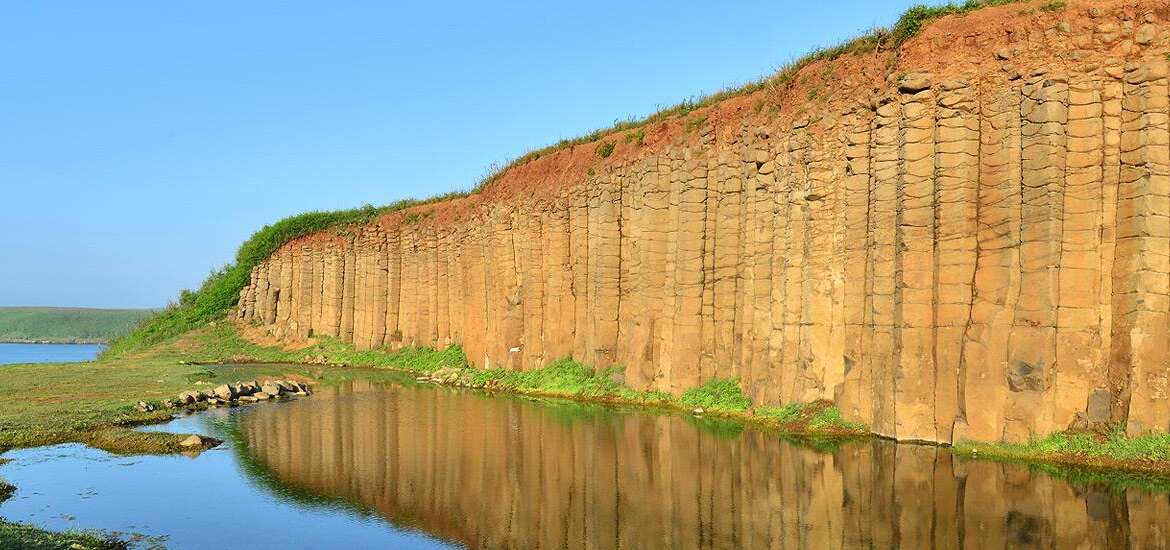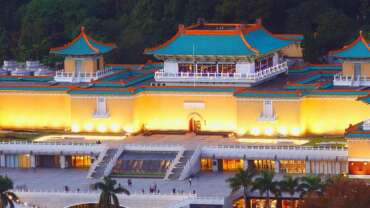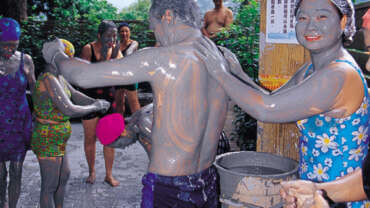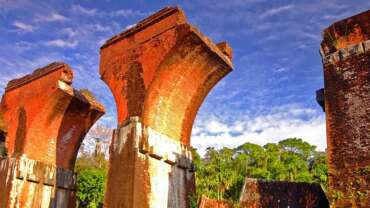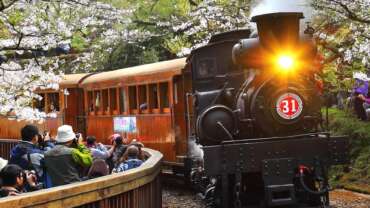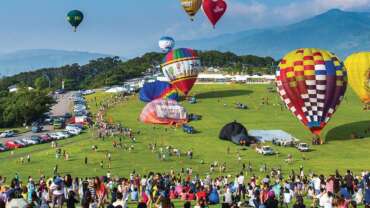Offshore Islands of Taiwan
Other than the main island, Taiwan has plenty of small surrounding islets, administered by counties such as Penghu, Kinmen and Lienchiang. Once a forbidden military zone, Kinmen today is a popular tourist area. Its three specialties – steel knives, peanut candies, and sorghum wine, are long-time best sellers. Matsu’s old wine and the sorghum wine of Tunnel 88 have a resounding taste.
In Penghu, the fireworks festival held at the turn of spring and summer is full of passion and romance. The blue sky and oceans, as well as soft white sand beaches, plus all kinds of fun water facilities, await visitors to enjoy.
Penghu County
Like pearls scattering in the East Sea, the Penghu archipelago is located in the southwest of the Taiwan Strait. Penghu is known as the pearl of the Taiwan Strait. Composed of 90 islands, the county is steeped in history and culture, with magnificent ocean views and many other natural wonders.
Basalt columns sculpted by the elements are a dominant part of the geological landscape on the Penghu Islands. The clear waters of Penghu Bay and strong winter winds have put Penghu on the map as an international hot spot for competitive sailing. The islands host brilliant firework festivals in the spring and summer, and in fall and winter visitors can enjoy the fresh and delicious catch of the sea at the Penghu Seafood Carnival. Penghu is also an excellent choice for seaside fun, with blue seas, clear skies, soft white beaches, plenty of beach and water recreation facilities, and an amazing marine ecology and scenic beauty.
It is easy to get to Penghu from other parts of Taiwan. Regular flights serve the islands from Taipei, Taichung, Tainan, Chiayi, and Kaohsiung, and a regular charter flight service is offered from Kinmen. Visitors can also reach Penghu by boat, with service from Budai Harbor in Chiayi City, and the Port of Kaohsiung. Mainland Chinese visitors can sail from Xiamen to Kinmen and then continue by boat to Penghu, or they can take a charter flight directly from Xiamen to Penghu. Another option is to fly to the main island of Taiwan from one of the various cities offering direct cross-strait service and then continue by plane or boat to Penghu to round out the Formosan tour.
Kinmen County
Kinmen, also known as Quemoy, is a small island with a very big reputation. Situated just off the coast of Mainland China, it was the site of fierce fighting between Communist and Nationalist forces when the latter withdrew from the mainland in 1949.
The Kinmen Islands were known in earlier times as Wuzhou. In 1387, the Marquis of Jiangxia Chou Te-hsing erected walls to defend the Kinmen Island against pirates. Because of its geographic position, the Kinmen Wall became known as the “impregnable fort guarding the gate to the sea,” from which the name “Kinmen,” or “Golden Gate,” derives. For nearly a half century, Kinmen was a battleground in Taiwan’s defense against the mainland forces. Military administration of Kinmen was lifted in 1992, marking the start of the island’s emergence as a tourism destination. In January 2001, direct cross-strait links were opened between Kinmen and Xiamen in mainland China, putting the island in a key position for cross-strait interactions.
During the period of military administration, the soldiers and civilian residents of Kinmen lived in stoic conditions and worked together to develop the island infrastructure. The military installations developed at that time have today become an invaluable tourism resource for the islands. Major reforestation efforts by the military since 1950 have further endowed Kinmen with lush greenery and roadside flowers, giving the islands a reputation as a “park in the sea.”
In recent years, government conservation efforts and greater eco-awareness among the island residents have helped Kinmen’s bird population to steadily grow in numbers and species. The coastal waters of Kinmen are also home to several rare and protected species, including the Chinese otter (Lutra lutra chinensis) and the “living fossil” horseshoe crab.
Among Kinmen’s best-known specialty items are knives fashioned from old mortar shells, peanut candy, sorghum wine, vermicelli, sorghum vinegar, porcelain and ceramics. The climate, soil, and water quality of Kinmen are ideal for growing high-oil peanuts with rich flavor. The local harvest is used to make crispy peanut candy. Kinmen’s climate is also well suited for making strong sorghum spirits. The local vermicelli, taro, and pickled cabbage also stay true to tradition. Products made with the medicinal Glycine tabacina (wild soybean), and fine earth-fired ceramics are also popular specialty items here.
The snack culture of Kinmen has southern Fujian roots, while also infusing a unique local touch. Seafood specialties include oyster omelets, oyster vermicelli, and fried sandworms, and for a light snack one can choose from bite-sized savory pastries, date candy, Cantonese congee, stuffed clay-oven rolls, and other taste bud pleasers.
Lienchiang County (Matsu)
Named after the goddess “Mazu”, Matsu Archipelago is located northwestward by west in Taiwan Strait, which is the very water Matsu had saved many sailors’ lives.
The Matsu Islands are composed of dozens of islands, including Nangan, Beigan, Juguang, and Dongyin. The chain occupies the northernmost edge of the Taiwan-Penghu-Kinmen-Matsu area at the west-northwest side of the Taiwan Strait, just a stone’s throw from mainland China. During the opposition to the mainland communist regime, Matsu served as Taiwan’s front-line defense, turning the island landscape into battlefield scenes of psy-war slogans, defensive tunnels, and troops.
Although the monsoons, ocean currents, and Matsu’s geographical position make the islands scorching hot in the summer, visitors still flock to Matsu in the months of June to August to see the fabled Chinese crested tern (or common tern). In winter, with the arrival of the chilling northeast monsoons, Matsu comes alive with folk activities and religious ceremonies for the Lantern Festival. Entire villages mobilize for this grand event, which consists of the “Bai Ming” offering ceremony and a ceremony to welcome the gods for a tour of the mortal world.
Differences between Matsu and the main island of Taiwan can also be seen in the building materials, architectural styles, and functional aspects of residences in Matsu. Some of the better-known villages include: Niujiao, Jinsha, and Tieban on Nangan Island; Qinbi and Qiaozai on Donggan Island; and Fuzheng and Dapu on Dongju Island. In addition, Matsu is a paradise for sea fishing thanks to its numerous bays and reefs, as well as ocean currents that channel abundant marine resources to the island throughout the year. Matsu also has many well-known local specialty products, including Matsu Aged Liquor and Tong Yung X’Old Kao Liang Liquor, both favorites served at state banquets. A wide variety of seafood and processed seafood products, healthy red yeast cuisine, pickled vegetables, and pastries also make good souvenir gifts for home.



